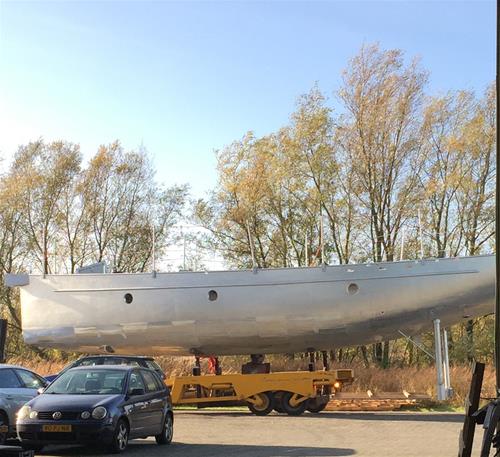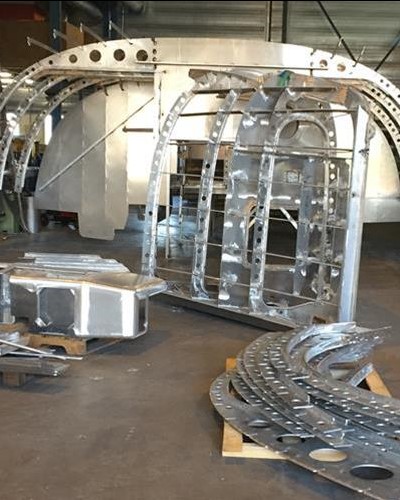Aluminium Boat Surveys
 Compared to steel marine grade aluminium alloys are half as strong, weigh about a third as much, are about a third as stiff and above the waterline require no protection against the marine environment. A direct comparison to an FRP laminate is not strictly possible as the properties of the laminate are directional unlike those of the aluminium alloy but a rule of thumb is that aluminium alloys are about a third stronger and about five times as stiff as a Polyester/ E Glass Laminate. These properties make aluminium an attractive material for boat building and it has found widespread use for high speed and modern working craft where weight is a consideration and is not uncommon as a hull material for sailing yacht
Compared to steel marine grade aluminium alloys are half as strong, weigh about a third as much, are about a third as stiff and above the waterline require no protection against the marine environment. A direct comparison to an FRP laminate is not strictly possible as the properties of the laminate are directional unlike those of the aluminium alloy but a rule of thumb is that aluminium alloys are about a third stronger and about five times as stiff as a Polyester/ E Glass Laminate. These properties make aluminium an attractive material for boat building and it has found widespread use for high speed and modern working craft where weight is a consideration and is not uncommon as a hull material for sailing yacht s.
s.
Aluminium is however more expensive than steel, requires skilled welders experienced with the material and a strict adherence to welding procedures. The correct choice of alloy is critical as certain of the alloys are weakened by welding and so, unlike steel, aluminium is not as amenable to self-build projects and repairs need to be correctly specified.
Aluminium is particularly susceptible to galvanic corrosion and the proper specification and maintenance of cathodic protection for the submerged hull is essential as is the need to avoid contact with dissimilar metals in topside structures and deck fittings. This is also the reason for the requirement of an aluminium compatible anti fouling. Aluminium self-passivates by forming a thin oxide layer and if the oxide layer is compromised and there is insufficient oxygen to sustain passivation then ongoing hidden corrosion is a risk.

